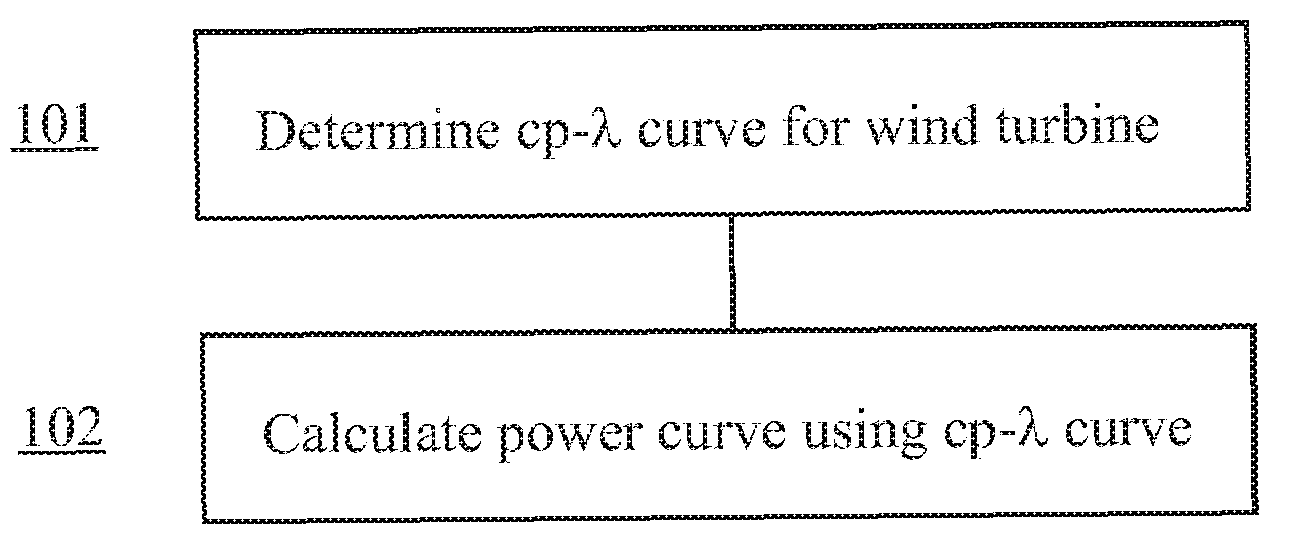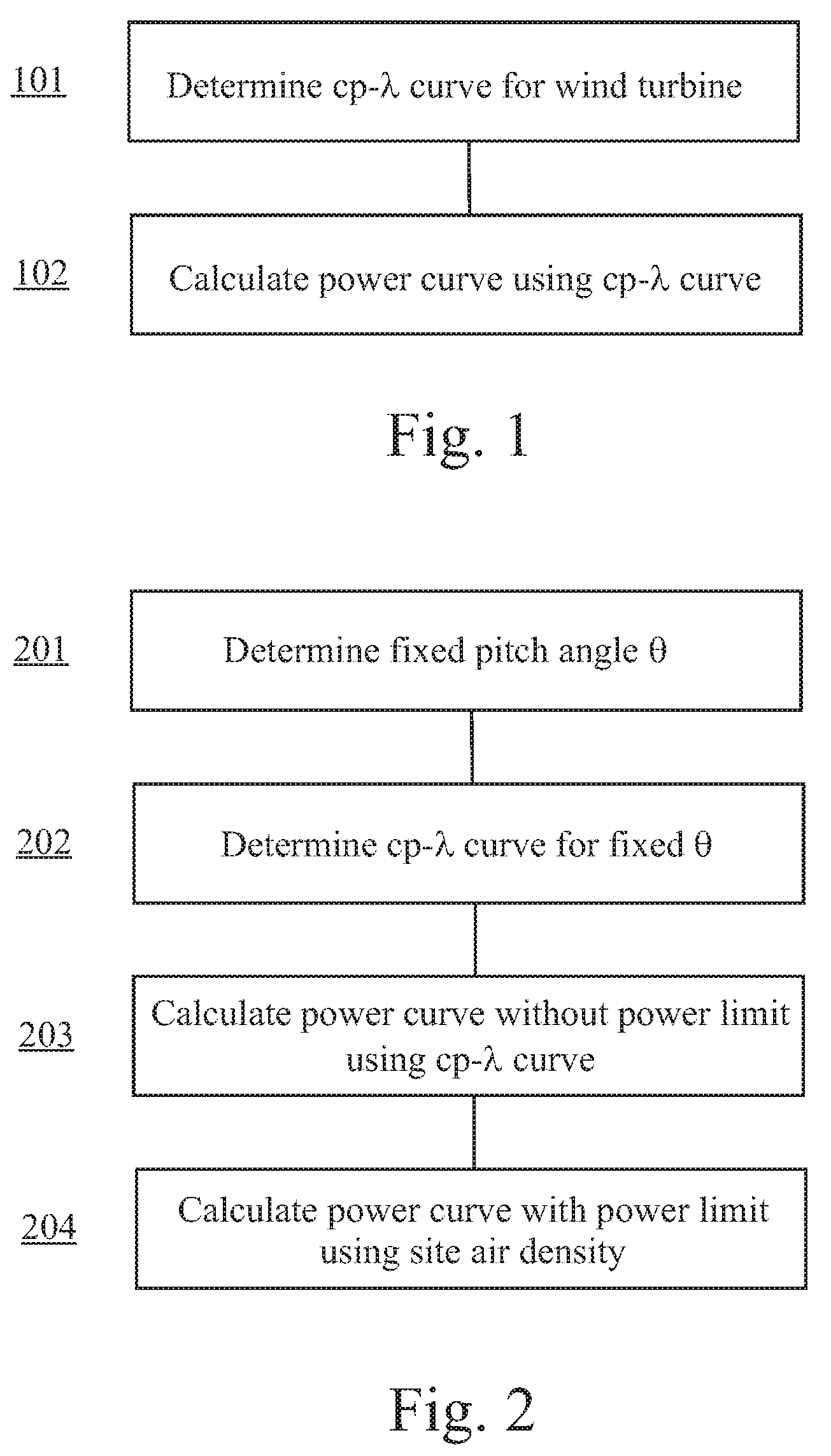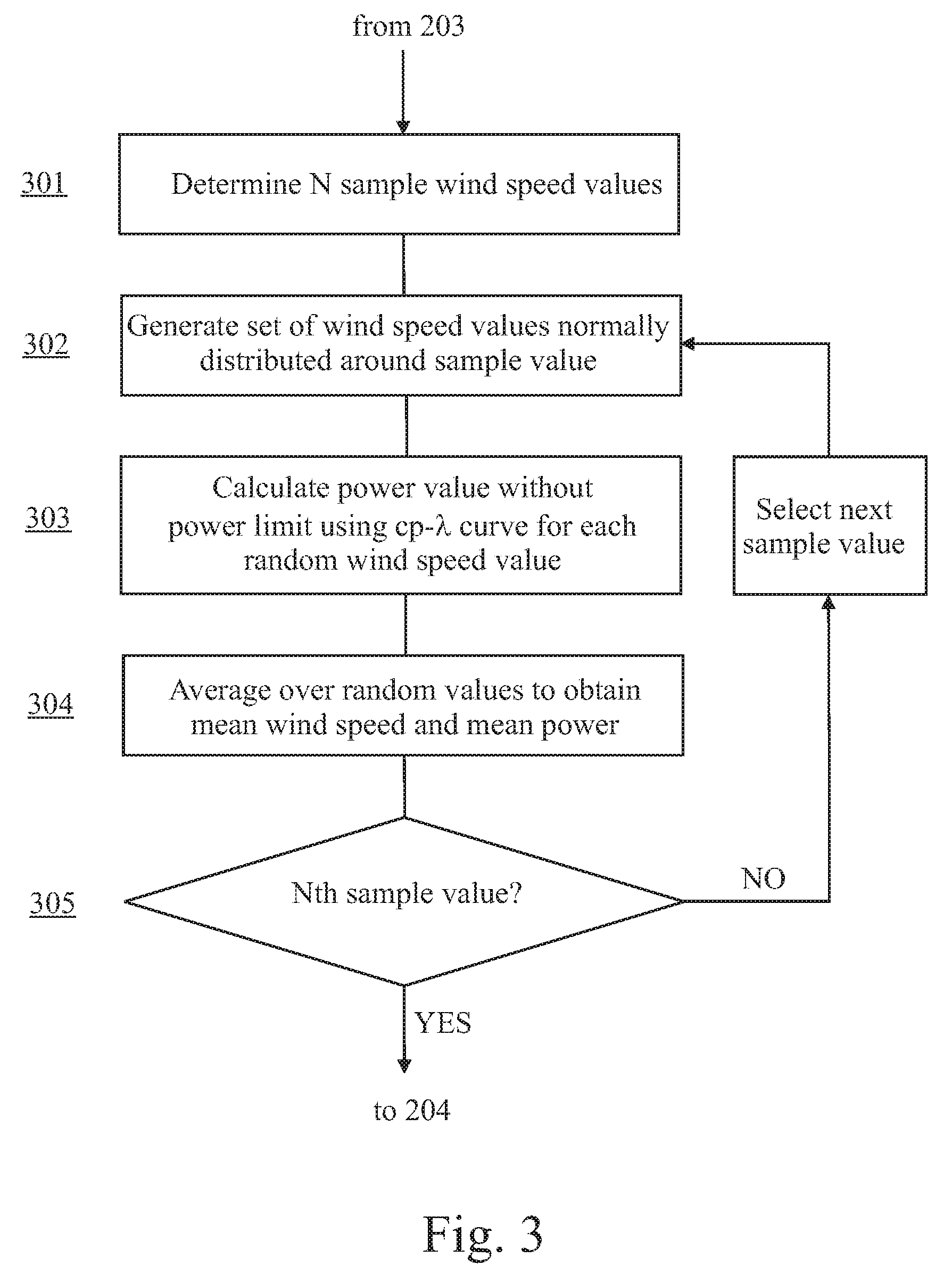Method for predicting a power curve for a wind turbine
a technology of wind turbines and power curves, which is applied in the direction of process and machine control, electric generator control, electric devices, etc., can solve the problems of affecting the quality of power output predictions, affecting the efficiency of wind turbines, and over-estimating the power production in the partial load operation range of wind turbines, so as to achieve the effect of improving the quality of annual power output predictions and turbine control
- Summary
- Abstract
- Description
- Claims
- Application Information
AI Technical Summary
Benefits of technology
Problems solved by technology
Method used
Image
Examples
Embodiment Construction
[0022]Reference will now be made in detail to the various embodiments of the invention, one or more examples of which are illustrated in the figures. Each example is provided by way of explanation of the invention, and is not meant as a limitation of the invention. For example, features illustrated or described as part of one embodiment can be used on or in conjunction with other embodiments to yield yet a further embodiment. It is intended that the present invention includes such modifications and variations.
[0023]FIG. 1 shows a flow diagram of a method according to a first embodiment of the present invention. Therein, in a first step 101 a relation between the power coefficient cp and the tip-speed ratio λ is determined. This relation is typically called a cp-λ curve and is widely used for the characterization of wind turbines. In particular, the cp-λ curve will depend on the shape and number of the rotor blades as well as on the actual pitch angle of the blades. FIG. 4 shows seve...
PUM
 Login to View More
Login to View More Abstract
Description
Claims
Application Information
 Login to View More
Login to View More - R&D
- Intellectual Property
- Life Sciences
- Materials
- Tech Scout
- Unparalleled Data Quality
- Higher Quality Content
- 60% Fewer Hallucinations
Browse by: Latest US Patents, China's latest patents, Technical Efficacy Thesaurus, Application Domain, Technology Topic, Popular Technical Reports.
© 2025 PatSnap. All rights reserved.Legal|Privacy policy|Modern Slavery Act Transparency Statement|Sitemap|About US| Contact US: help@patsnap.com



